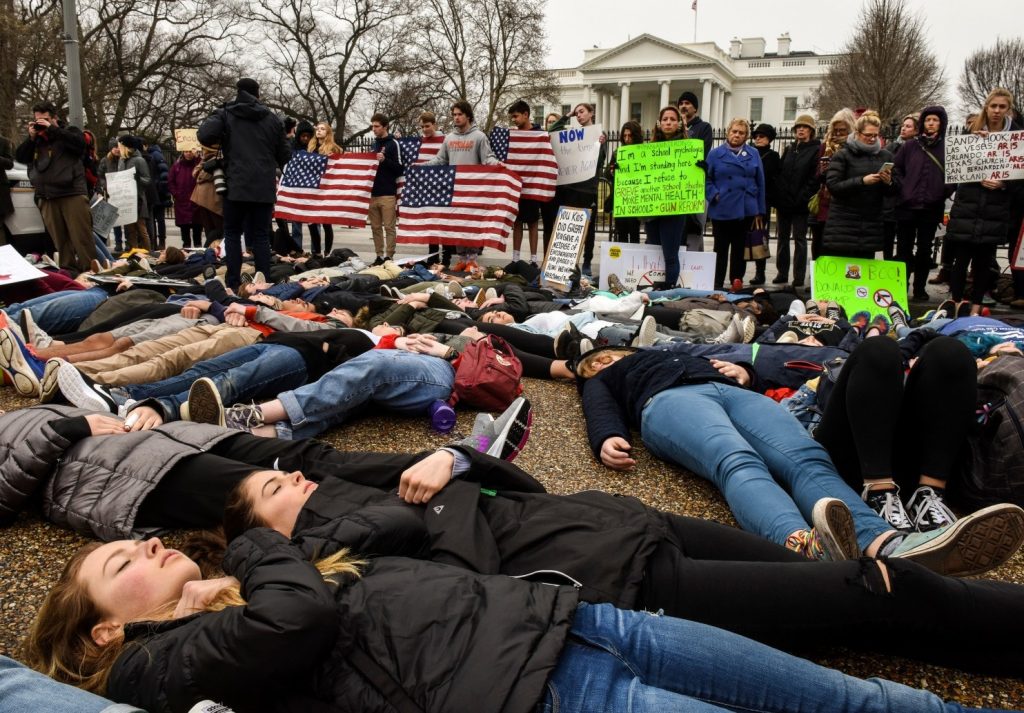
(Bill O’Leary / Washington Post)
America sadly once again was shaken to our core 2 weeks ago as 17 kids were murdered in Parkland, Florida while attending school. It energized a new student movement and renewed a conversation about gun control. But while the Florida massacre and its aftermath events were occurring, a non-shooting death of school kids started taking place in another part of the country. Now, this non-shooting death of school kids threatens to spread to yet another part of our country. Potentially affecting thousands more of America’s most precious commodity, the nations school kids.
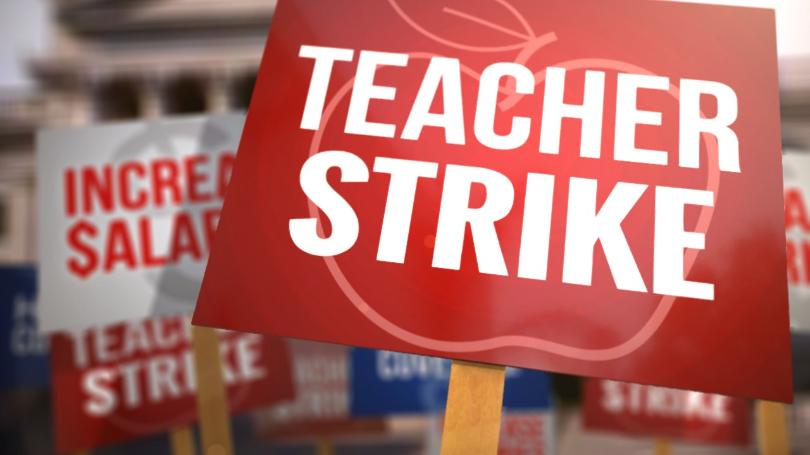
On February 22 20,000 West Virginia teachers walked off the job to participate in a statewide teacher strike. This brought classes for about 277,000 students to an abrupt halt, starting the non-shooting death of school kids by teacher strike throughout the state. The teacher strike came following an announcement from West Virginia Governor Jim Justice, saying he had signed a bill that would give teachers a 2 percent raise as of July 1 and a 1 percent raise each of the following two years.
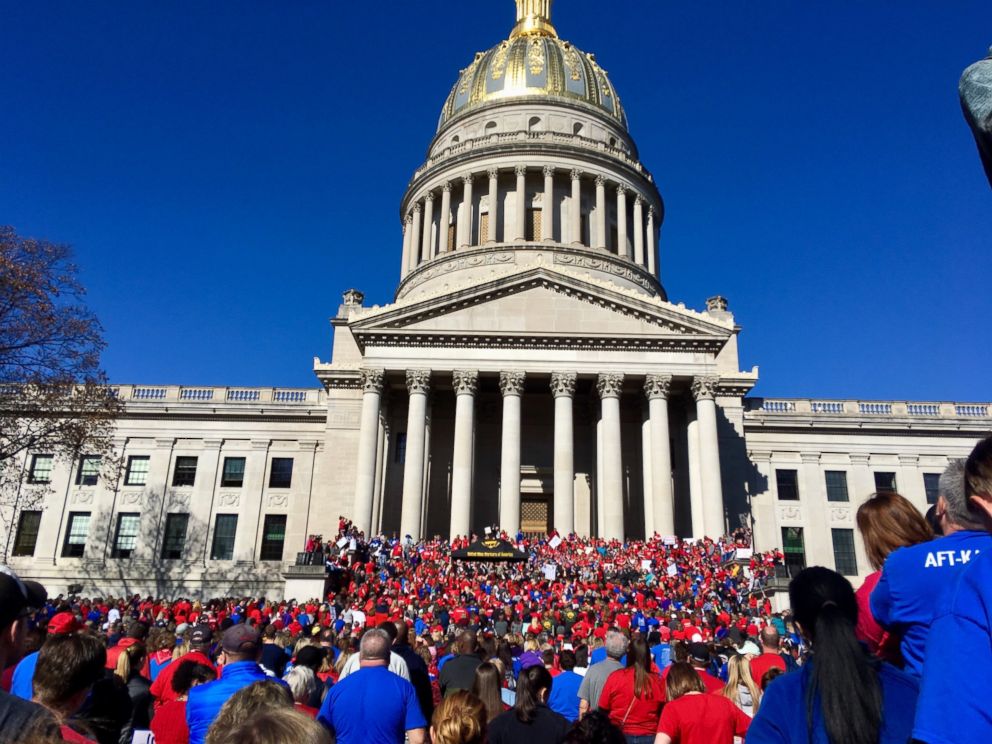
All 55 of W.Virginia’s County school systems were shut down because of the teacher strike, thousands of teachers attended a rally at the state Capitol in Charleston, W.Va. demanding a 5% pay raise
Teachers argued that those raises would be swallowed up by premium hikes and benefits cuts from the Public Employee Insurance Agency (PEIA), the teacher’s health insurance provider. While PEIA board members had frozen benefit cuts for a year, teachers said a temporary freeze would not help in the long-term. The average starting salary for a teacher in West Virginia is $32,435 per year, while the average teacher’s salary is $44,701, according to the West Virginia Education Association, making West Virginia teachers some of the lowest paid in the country.
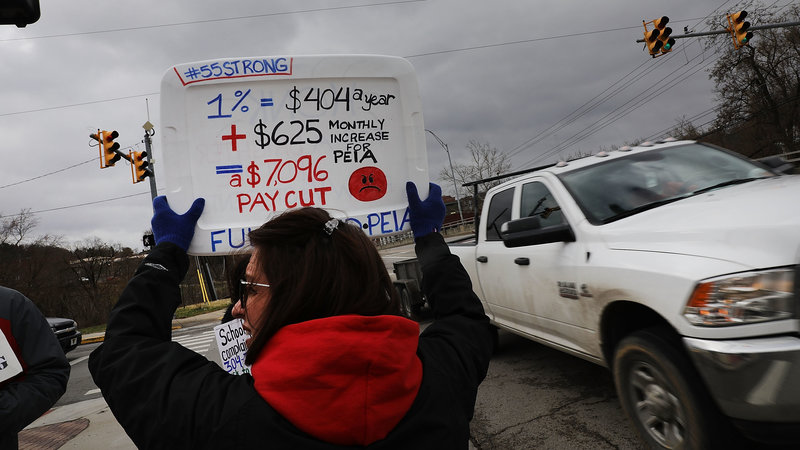
This teacher holds up a sign that explains how increased health insurance cost is more than the 1% proposed pay raise that teachers rejected Spencer Platt/Getty Images
Early last week, in an attempt to head off the teacher strike, Gov. Justice agreed to meet the demands of teachers and service personnel and give them a 5 percent raise. Because West Virginia is not a collective bargaining state, the raise had to first be passed as a law in order for it to be brought into effect. The House of Delegates approved the measure but Saturday the state Senate approved a bill that reduced the proposed pay rise from 5 percent to 4 percent, which upset teachers. The House, which had previously approved the 5 percent pay rise, rejected the Senate’s bill.
Fortunately this morning the Senate came to its senses and did the right thing. Gov. Justice tweeted the good news:
We have reached a deal. I stood rock solid on the 5% Teacher pay raise and delivered. Not only this, but my staff and I made additional cuts which will give all State employees 5% as well. All the focus should have always been on fairness and getting the kids back in school.
— Governor Jim Justice (@WVGovernor) March 6, 2018
The West Virginia non-shooting death of school kids is, fortunately, coming to an end, but it’s a signpost of other non-shooting deaths of school kids by teacher strike to come if we don’t adequately pay teachers.
“I never dreamed 19 years ago when I started teaching that I would have to work a second job to provide for my kids,” Rebecca Diamond, a second-grade teacher at Kellogg Elementary School who also works as a cashier at Hardee’s on the weekend, told Huff Post’s, Dave Jamieson. “I knew teaching wouldn’t make [me] billions, but I thought it would be enough.” The last across-the-board raise for teachers and other public employees came in 2014. Coupled with increasing deductions for health premiums, that means some workers have actually seen their take-home pay go down in recent years, according to Christine Campbell, president of the American Federation of Teachers-West Virginia.
“I don’t think people recognize how dire it is, and how it directly impacts students’ learning,” Campbell said. “Teacher vacancies are increasing. There are classrooms with no teacher of record. … We’ve actually been educating teachers at our universities in West Virginia and they’re not staying here.” The pain is not limited to West Virginia, and if things don’t change the non-shooting killing of school kids won’t be limited to there either.
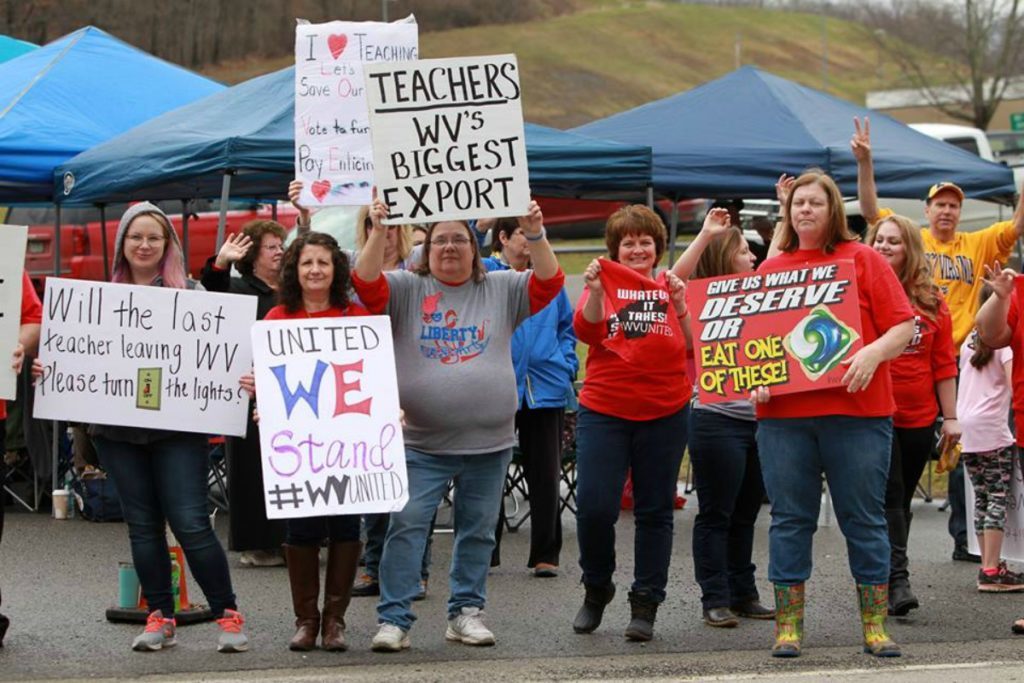
People are getting teaching credentials from W.Virginia colleges and leaving to teach in other states for better pay
Echoing West Virginia teachers grievances for more pay and more staff, Oklahoma teachers and a newly formed group “Oklahoma Teacher Walkout – The Time Is Now!” are calling for a teacher strike. The state’s 41,000 teachers could walk off the job as soon as April 2, the group’s leader said. “A walkout would be the last resort, but we want more money for education in the state, that means more money for supplies, more staff and pay raises so teachers will stay,” said the group’s leader, Alberto Morejon. “Teachers are leaving left and right, we’re the lowest paid in the country,” said Morejon, an eighth-grade history teacher in Stillwater, OK, about 66 miles northeast of Oklahoma City.
All public school teachers have to be certified and must have at least a bachelor’s degree. About half of all public school teachers have a master’s degree and over 60 percent have more than 10 years of experience. In America, the average salary for a public school teacher is about $58,000 a year. Over $ 12,000 more than the average salary for West Virginia teachers, and over $15,000 more than the lowest average salary of $ 42,744 paid to teachers in the state of Mississippi.
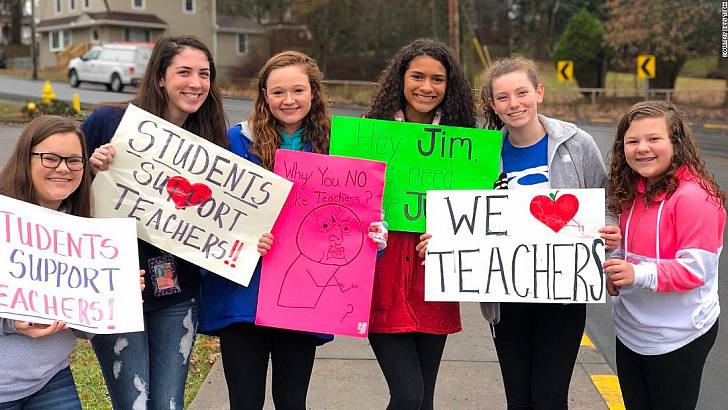
Many West Virginia students didn’t want more days off from school, but they do want their teachers to get better pay. The strike has closed every single public school in the state, leaving more than 277,000 students with unexpected free time.
In addition to educating our children, teachers must comply with state rules and regulations, and handle crowd control at school events. As Bryce Covert beautifully explains they also are often called upon to provide emotional support for their students and navigate families’ wants and needs. They do this work in an environment with increasingly constrained resources ―for instance in 29 states, funding is still lower than it was before the 2008 recession ―and higher demands, such as being asked to implement new initiatives like the Common Core curriculum with no new resources for the necessary training. The work teachers do every day has a profound impact on shaping the knowledge and skills of the next generation, a generation who will grow up to be the country’s workers, inventors, leaders, and even teachers themselves. Research has found that of all the factors that influence a student’s education, teachers are by far the most important factor.
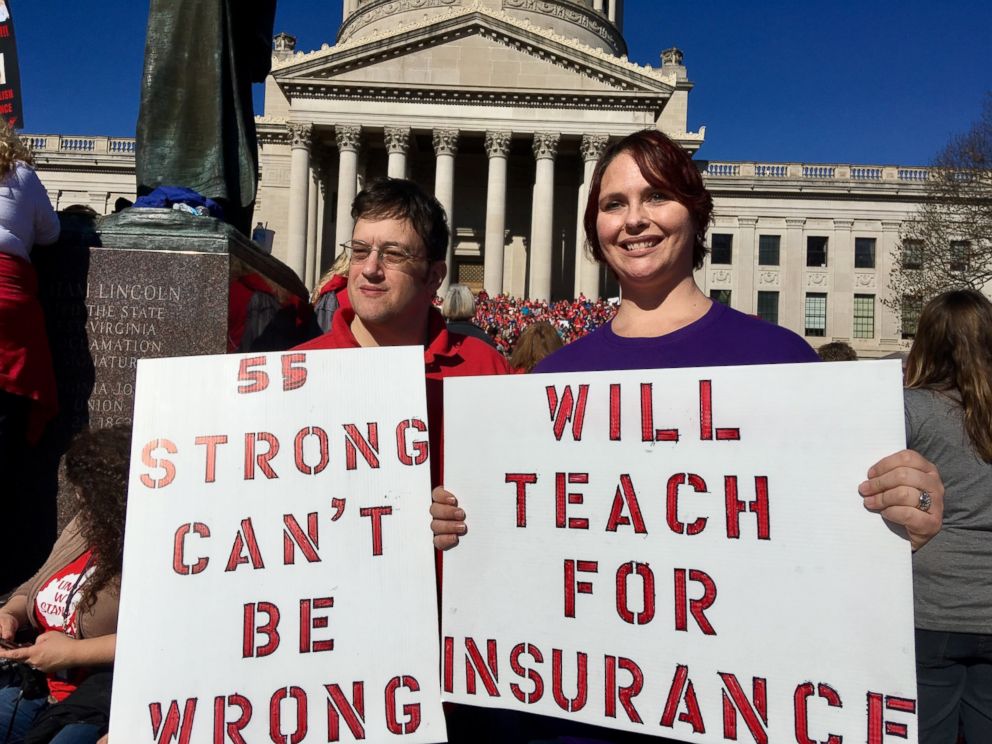
Teachers and school service employees in West Virginia wanted fixes to the Public Employee Insurance Agency (PEIA), the teacher’s health insurance provider whose rising cost combined with no salary increase in 4 years had caused many teachers take home pay to decrease
When you compare teacher salaries to people with similar educational credentials but whose jobs have far less of an impact on our society, teachers are paid a whole lot less. Public school teachers make 17 percent less than other comparable college graduates. The more experienced teachers have it the worst, facing even larger pay gaps. And things have been getting worse, not better: teachers only suffered a 1.8 percent pay differential two decades ago. Now college graduates overall saw their pay increase between 1996 and 2015, teachers saw theirs decrease.
One big reason we pay teachers at a discount is that we think of their work not so much as work but as service. Specifically, their jobs have come to be seen as an extension of women’s unpaid work. Elementary and secondary schools are teeming with women: Three-quarters of public school teachers are female. But in the more male-dominated field of academia, where women make up less than a third of professors, median pay is over $75,000 a year. On the other end, teachers in pre-kindergarten are paid far less than those who teach in K-12 education despite usually facing the same training and education requirements — and they are nearly 98 percent female.

W.Virginia teachers hope they made this a teachable moment for their students
Whether female or male, it takes a special breed to be a teacher because it’s a profession that does require an element of service and dedication to human development. The younger the student the more of the service element the job requires, which in theory should mean no pay difference for teaching jobs that require the same education credentials, but unfortunately in practice it does not.
An example of teachers’ commitment to service and human development can be seen in their planning of the West Virginia teacher strike. West Virginia teachers’ thinking of their low-income students, planned ahead and prepared extra backpacks full of food so that those students would have food for the days they’d spend at home during the teacher strike. Teachers from pre-K to high school know that the only meal that some of their students receive is at school. Their commitment to service and human development compels them to be concerned with more than their paid job of educating the mind. They go the extra step with concern for the nutrition of the body knowing that a healthy body fosters a healthy mind.
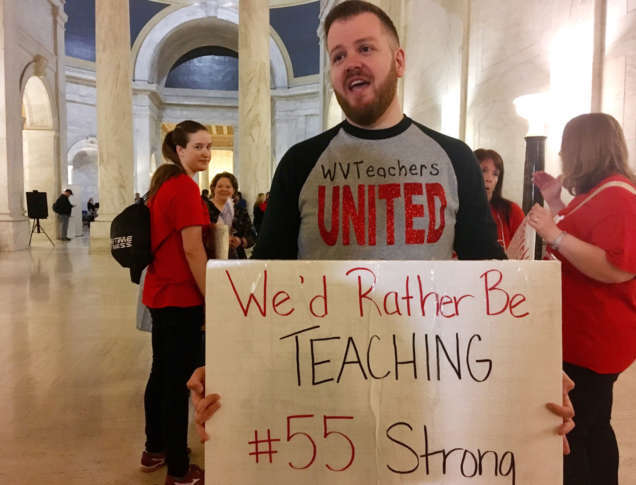
Jacob Staggers, a sixth-grade English teacher at South Middle School in Morgantown, W.Va., holds up a sign outside the state Senate chambers at the Capitol in Charleston, W.Virginia that reflects the sentiment of all the teachers who were on strike (AP Photo/John Raby)
Teachers’ importance to society, their service, and commitment to human development should be rewarded not taken advantage of. When you consider that teachers rank 2nd only to the female species when it comes to the proliferation of human life development, that not having adequately paid teachers is the equivalent of the non-shooting death of school kids, and that we place a monetary value on things that are valuable to us, teachers should be paid on par as the average lawyer, doctor or accountant since you can’t become a part of any profession without having first, the service and commitment of a TEACHER!



